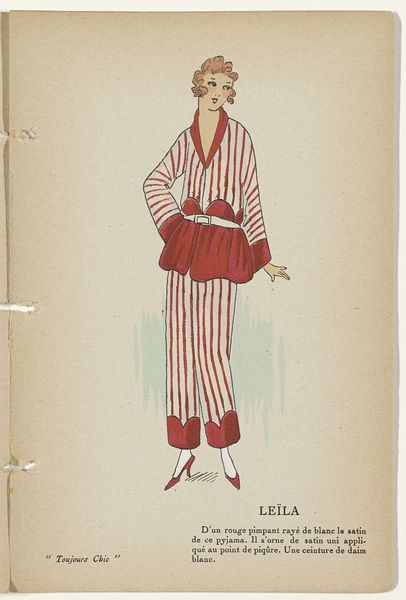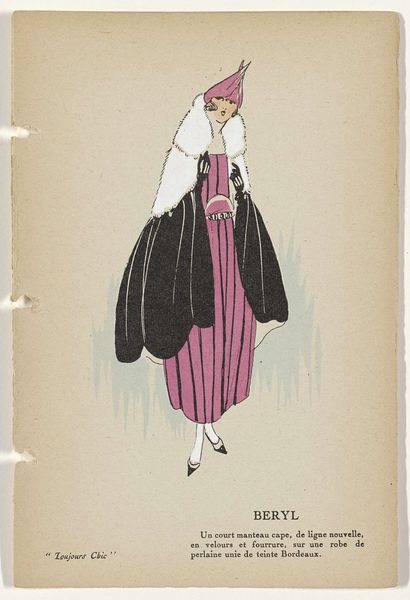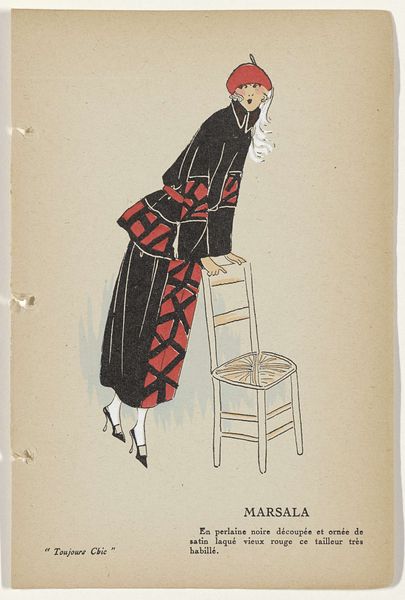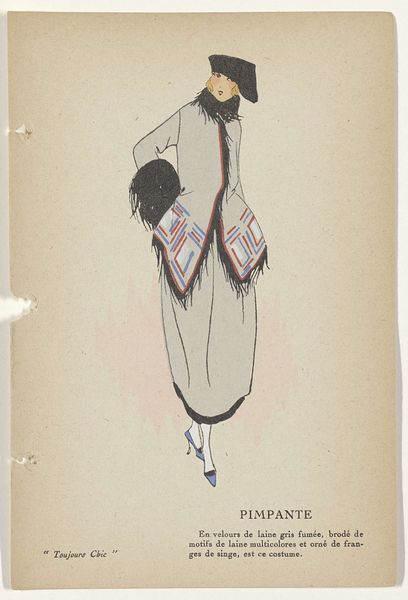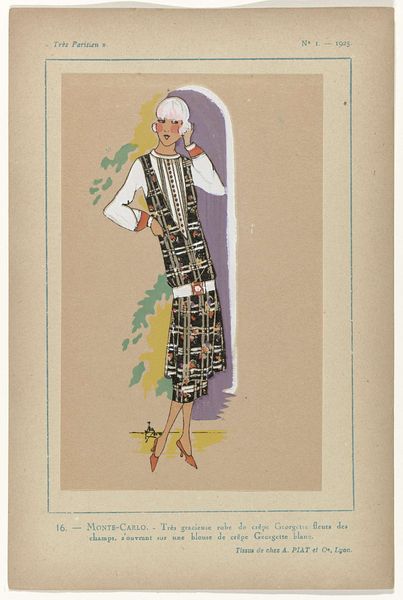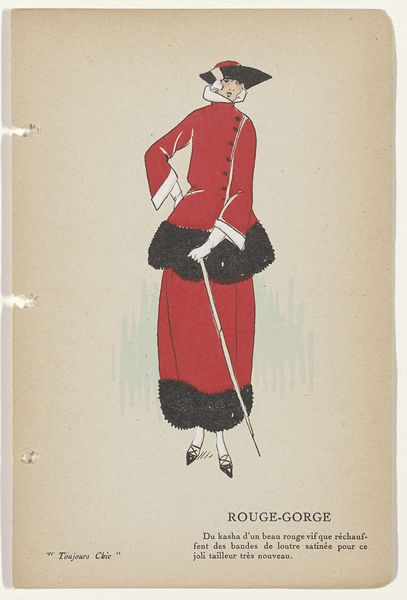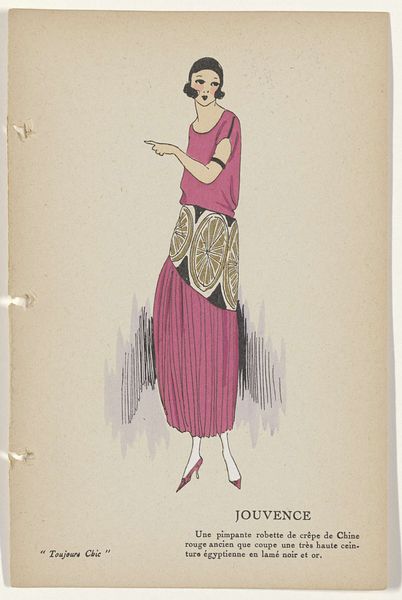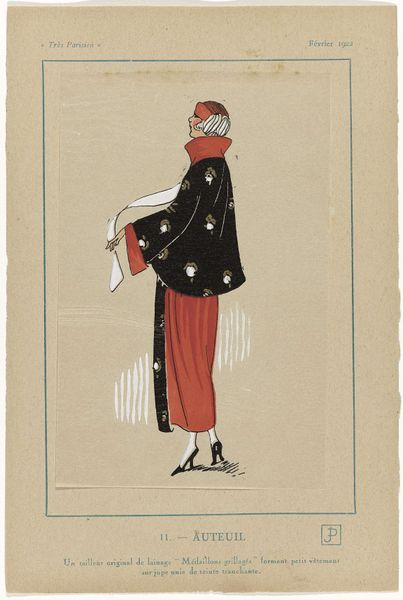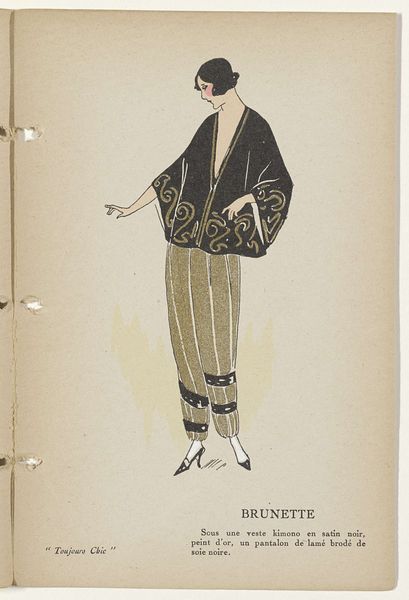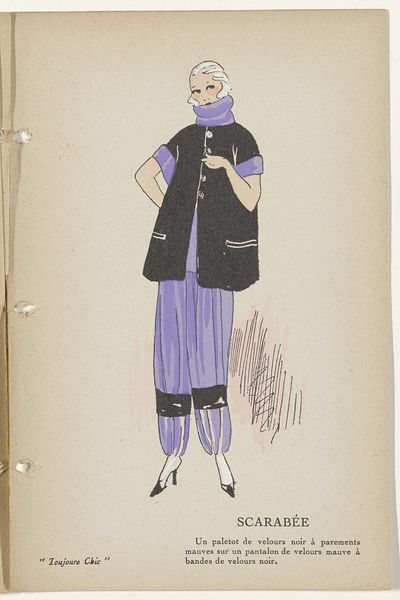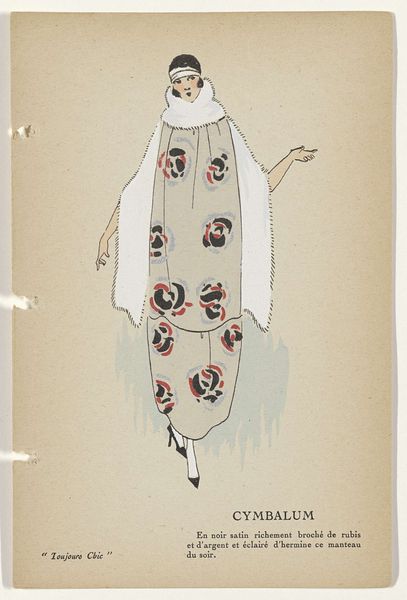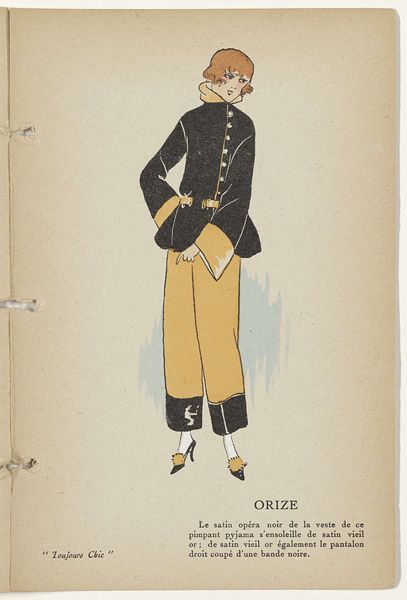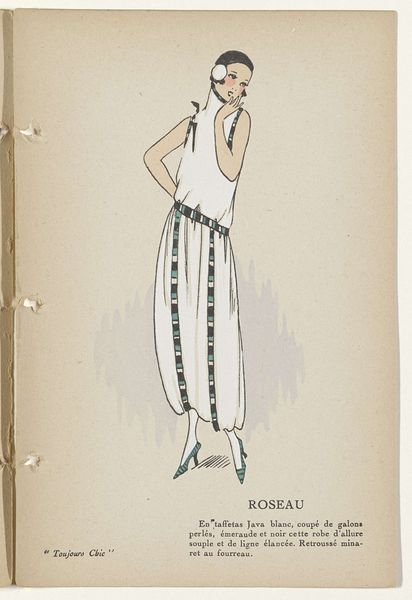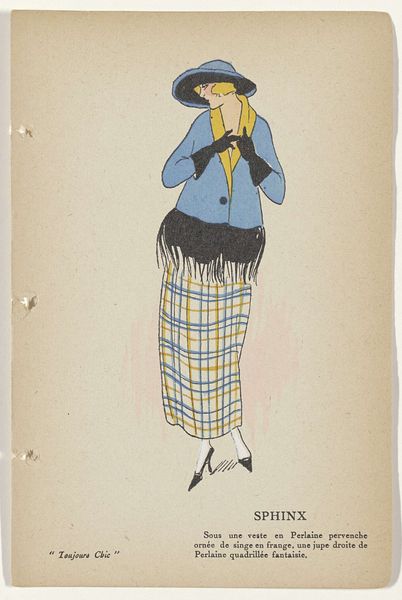
Toujours Chic Les Tailleurs et Les Manteaux, Hiver 1921-1922: Pollux 1921 - 1922
0:00
0:00
Dimensions: height 180 mm, width 120 mm
Copyright: Rijks Museum: Open Domain
Editor: So, here we have "Toujours Chic Les Tailleurs et Les Manteaux, Hiver 1921-1922: Pollux" by G-P. Joumard. It’s a watercolor and ink drawing on paper, very much in the Art Nouveau style. It’s striking how the embellishments on the clothing almost overwhelm the figure. What stands out to you? Curator: What strikes me is the visible labor embedded in this image, not just the artist's hand but also the unseen labor of the garment workers. It's crucial to recognize the velvet, the silk, and the 'paille'—straw—used in the embroidery. Where did those materials come from? Who processed them? This image presents the *result* of those material transformations, occluding all the stages of extraction and manufacture. Editor: I see what you mean! So it’s not just an innocent fashion illustration, but it points to a whole chain of production? Curator: Exactly! Look at the context: "Hiver 1921-1922." This is post-World War I, a period of significant social and economic upheaval. The materials, even the luxurious ones displayed here, would have been scarce for some. Consider the labor practices—were these embroideries made in workshops, or by women at home struggling to make ends meet? This drawing serves as a commodity in itself, promising access to style to those who can afford it and highlighting a huge socioeconomic gap. Editor: Wow, I never thought about it that way. I was just thinking about the aesthetic design. Curator: The design *is* deliberate, of course! But consider what choices like depicting such elaborate embellishments suggest about the target audience, and their material desires, given the world they were living in. And even the very process of using watercolor and ink - it speaks of specific artisan methods accessible only through dedicated learning and practice. How were such crafts kept available and practiced? Editor: It makes me think about the role of fashion, not just as clothing but as a kind of economic statement. I will definitely never look at these illustrations the same way! Curator: Precisely. It prompts us to delve into the often-invisible systems that make such displays of ‘chic’ possible, shifting our perspective from aesthetics to the means of production.
Comments
No comments
Be the first to comment and join the conversation on the ultimate creative platform.
